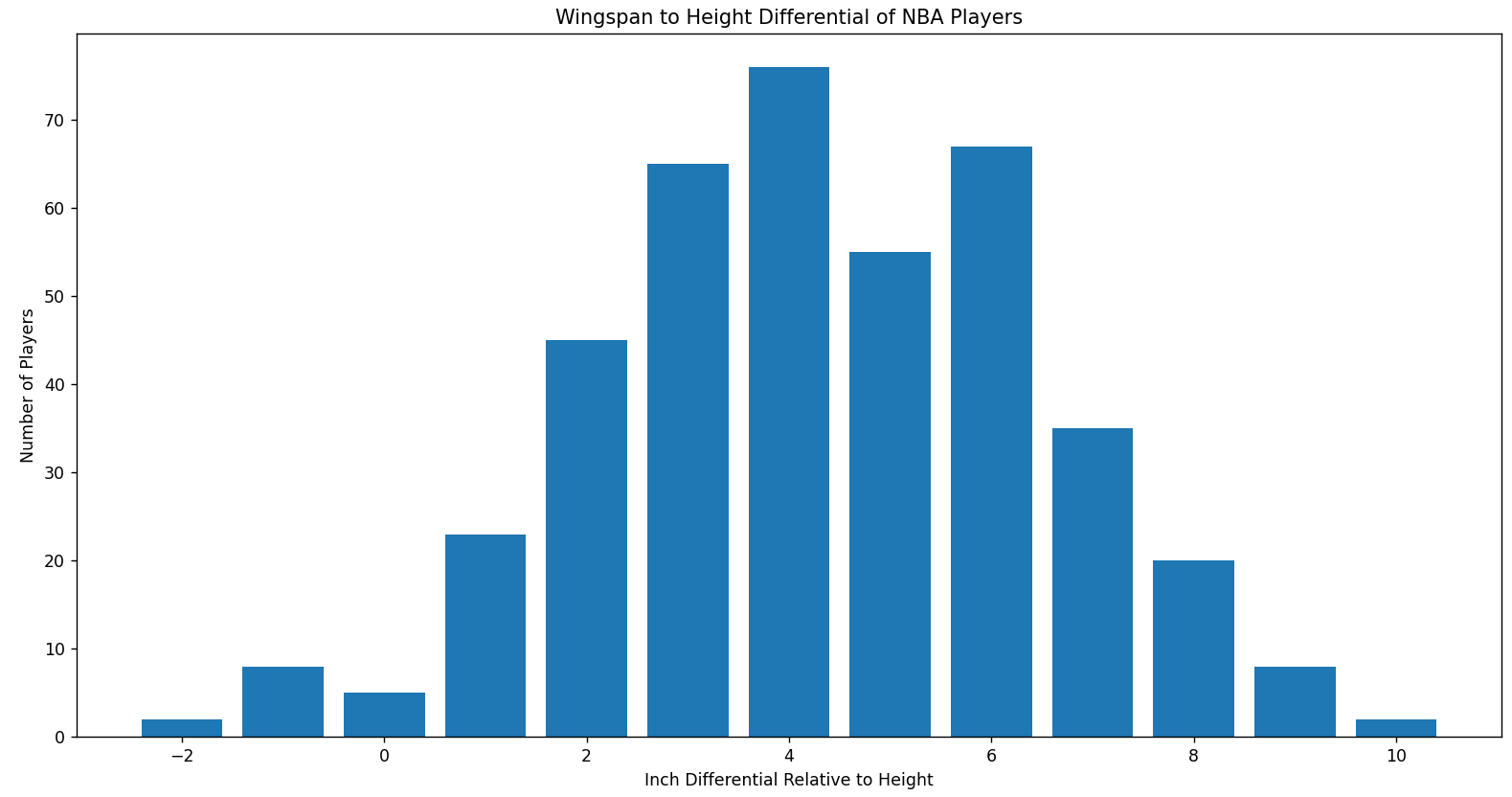Wingspan or Height? Looking at What Measurables Matter in the NBA
As someone who plays basketball quite often, I noticed that there is a significant advantage that comes with having a long wingspan. On the defensive end, it allows you to be much more effective by getting loose balls, and generating steals and turnovers. Many of the best defensive players in the NBA have incredibly long wingspans relative to their height, including: 1. Kawhi Leonard 2. Rudy Gobert 3. Giannis Antetokounmpo 4. Draymond Green A lot of highly effective offensive players also have long wingspans. Kevin Durant has a 7'6" wingspan, giving him the ability to easily shoot over smaller defenders. However, the majority of the advantages of having a long wingspan come on the defensive end. Most people have wingspans that are approximately equal to the height. I was curious to see whether this held true in the NBA. I initially assumed that it wouldn't, as it would make sense that players with longer wingspans relative to their heights would be more effective players, and then be able to make the NBA. To test this out, I scraped the height and wingspan data of all the current NBA players off the internet using Selenium and Beautiful Soup. I then plotted all the data points using Matplotlib, along with a 1 : 1 line. I then plotted a line that is 1 : 1 + 5", which is actually a much closer representation of the NBA data. This indicates that having a longer wingspan than height is very valuable in basketball. The graph can be seen below, and the source code can be found here. There is also a bar chart that demonstrates how long NBA player wingspans are in relation to their heights.

